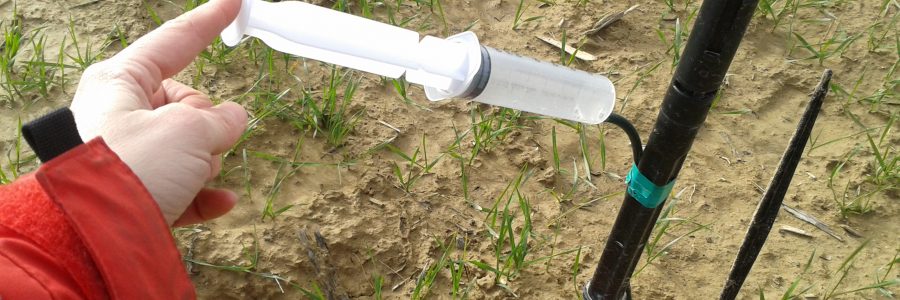Groundwater contamination by nitrates due to agriculture is one of the main environmental problems. Nitrate leaching is a complex physical process, influenced by many variables. However, simulating nitrate leaching through models is now possible.
Nitrate leaching from soils can be due to fertilization excess, improper irrigation or land management. It can be due to climate variability as well.
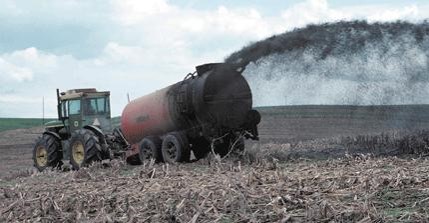
Modelling simulation could improve agricultural management, reducing nitrate contamination of groundwaters. Furthermore, simulations could estimate contamination risks due to climate variability.
In Europe, the EU Nitrates Directive aims to prevent nitrates from agricultural sources. The Directive protects waters, promoting good farming practices.
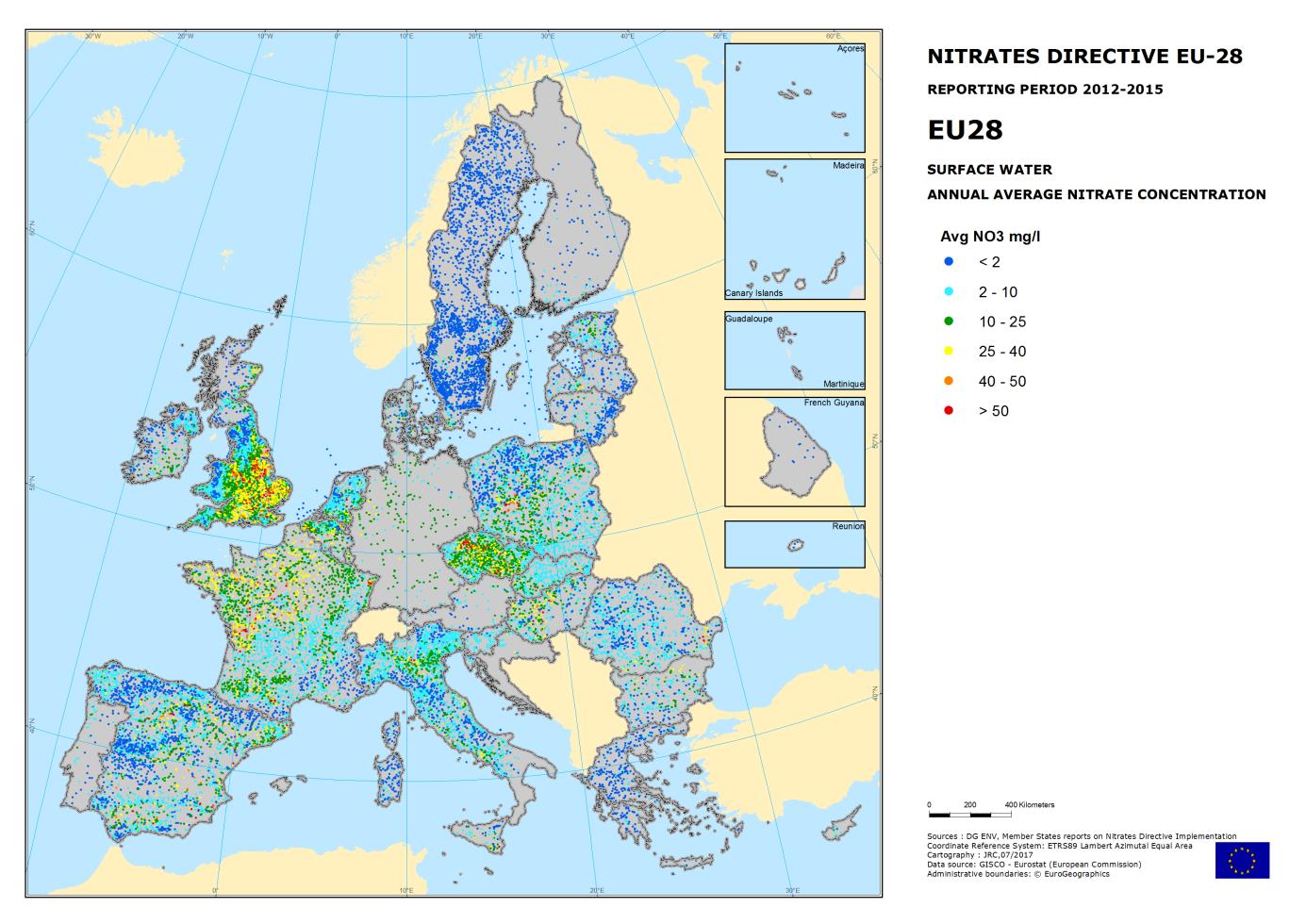
All the EU member states must meet the Nitrates Directive. It is one of the key instruments to protect European waters against agricultural pressures.
The EU Nitrates directive forces member states to monitor the water status. They must declare “Nitrates Vulnerable Zones” (NVZs) and develop action programmes. Member states have to report to the EU Commission every 4 years. The area to which action programmes apply constitutes about 50% of the total EU land.
The agricultural “Code of Good Practices” are compulsory in NVZs zones, according to the Common Agricultural Policy (CAP) “cross-compliance”. Furthermore, the agro-environmental measures in the EU Rural Development aids encourage pollution free practices. However, a report from the EU Court of Auditors pointed out several weaknesses in CAP regarding environmental goals.
The European experience regarding the implementation of Nitrates Directive has been resumed in a ClimaRisk paper freely available. We have focused particularly in the South European countries, where irrigation plays an important role in nitrate pollution of waters.
Simulating nitrate leaching: Procedures
The modelling approach shown below was followed in the LIFE NITRATES project. It was used as well as in the Horizon 2020 FREEWAT project. Both projects were conducted by Zeta Amaltea (contractor). They aimed to help to implement the EU Nitrates Directive, simulating nitrate leaching from agricultural zones.

This combined procedure for simulating nitrate leaching is up-to-date and sounder. It has been successfully used in the Netherlands, Italy, China and several other places. Our main contribution relies in the use of the agricultural information from the Common Agricultural Policy (CAP) records. Therefore, our simulation unit is the agricultural plot, with a single water and fertilizer management.
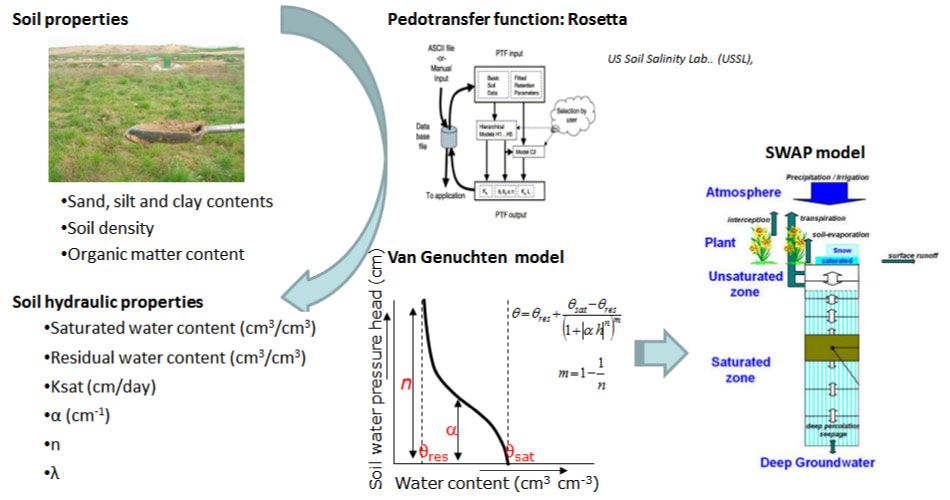
We used a pedotransfer function to estimate the parameters of the Van Genuchten model for the soil hydraulic properties, which are required as SWAP input. Soil data from more than 900 profiles from the zone were considered, as well as new soil samples taken in places with low measurement density.
Since we had the coordinates of all the agricultural plots, the nearest point with measured soil hydraulic properties was automatically associated to each plot, as well as the Meteorological values of the nearest station, among 12 stations available. This process has been programmed in a script, which searches the input data for each plot in a database, writes the SWAP input files, run the model, read the SWAP results files and write them in a database to be used as MODFLOW input.
The programmed script reads the crop data at each agricultural plot, as well as the soil properties and the meteorological variables associated to the plot. A single fertilizer management was designed for each crop, according to the typical management in the zone. Besides, sprinkler or surface irrigations were considered, according to the plot position. SWAP simulations of deep infiltration (below 140 cm depth) were used for simulating nitrate leaching.
Simulating nitrate leaching: Validations
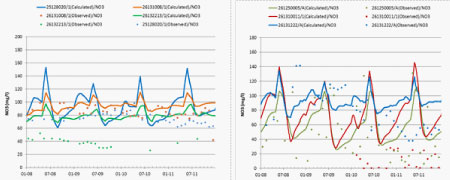
Final simulation results were compared with measured nitrate concentration values, registered in an existing monitoring network.
The simulation results show a relatively reliable agreement with measured values, compared to similar simulation studies. Some overestimations might be due to natural nitrate reduction, already found in some points of the experimental zone.
Despite of the inaccuracies, simulating nitrate leaching due to agricultural practices seems to be reliable enough. Simulations could help decision making, improving agricultural management. They could help to avoid nitrate pollution in groundwaters. This modelling approach might be particularly useful for Nitrates Directive implementation.

